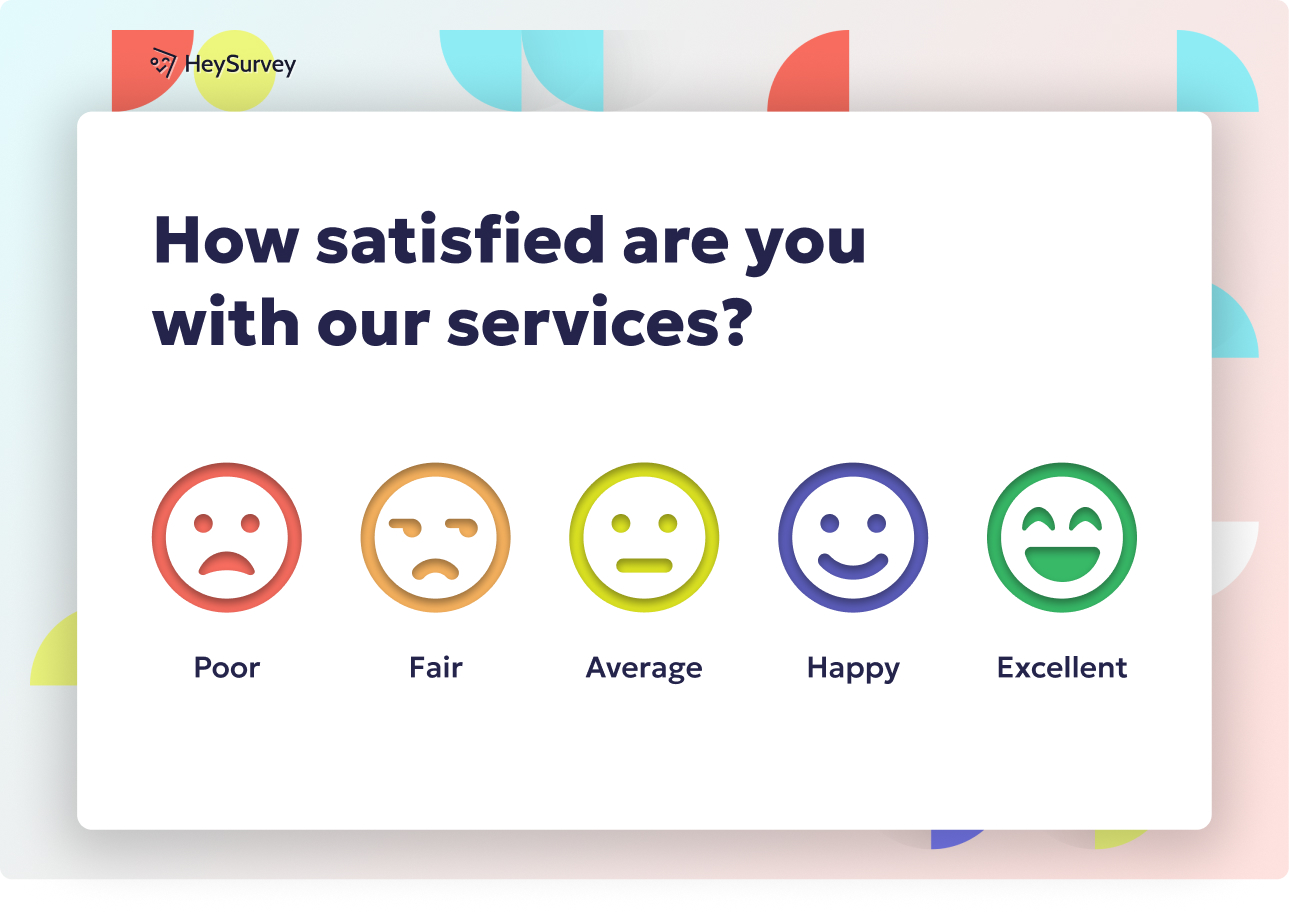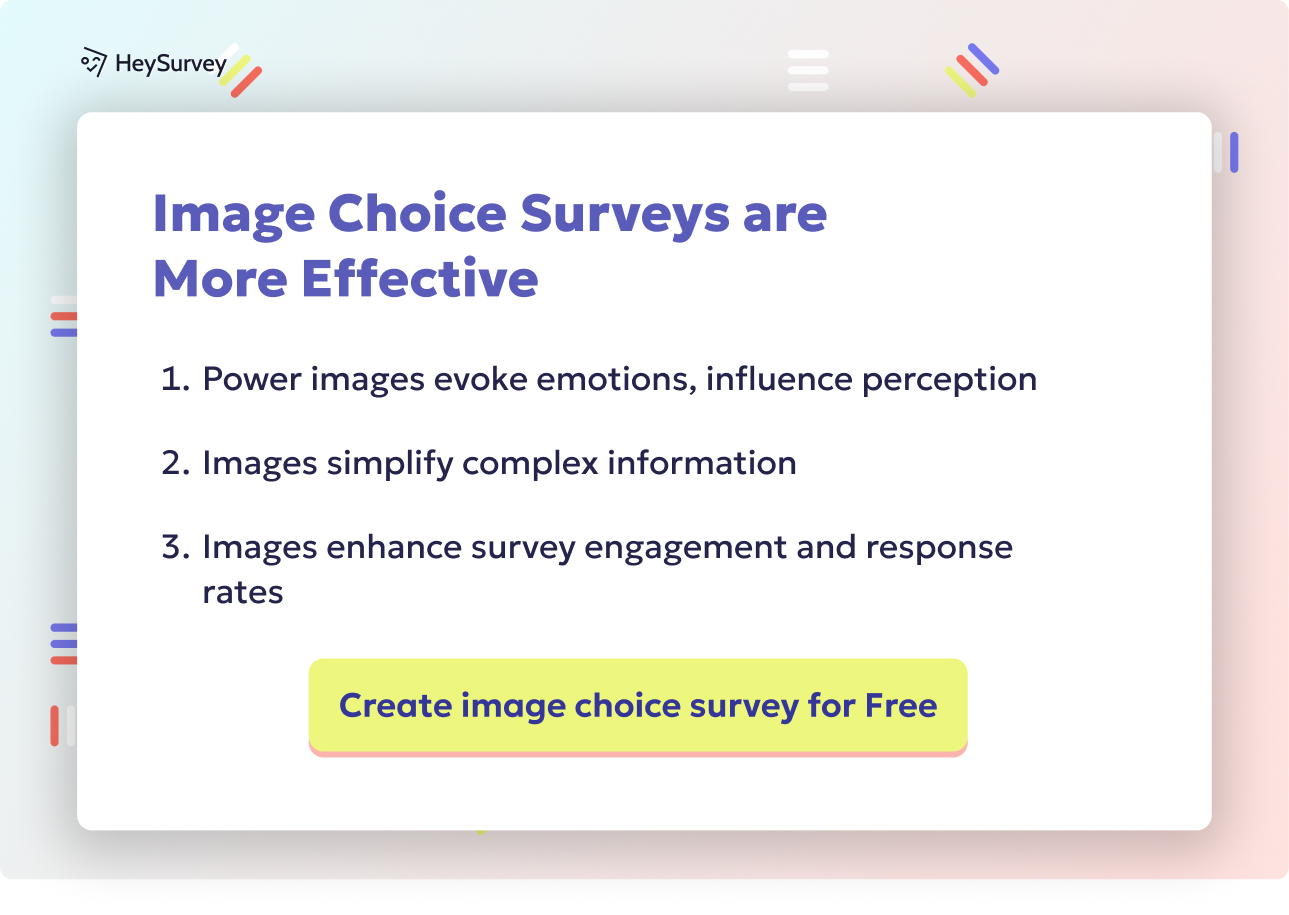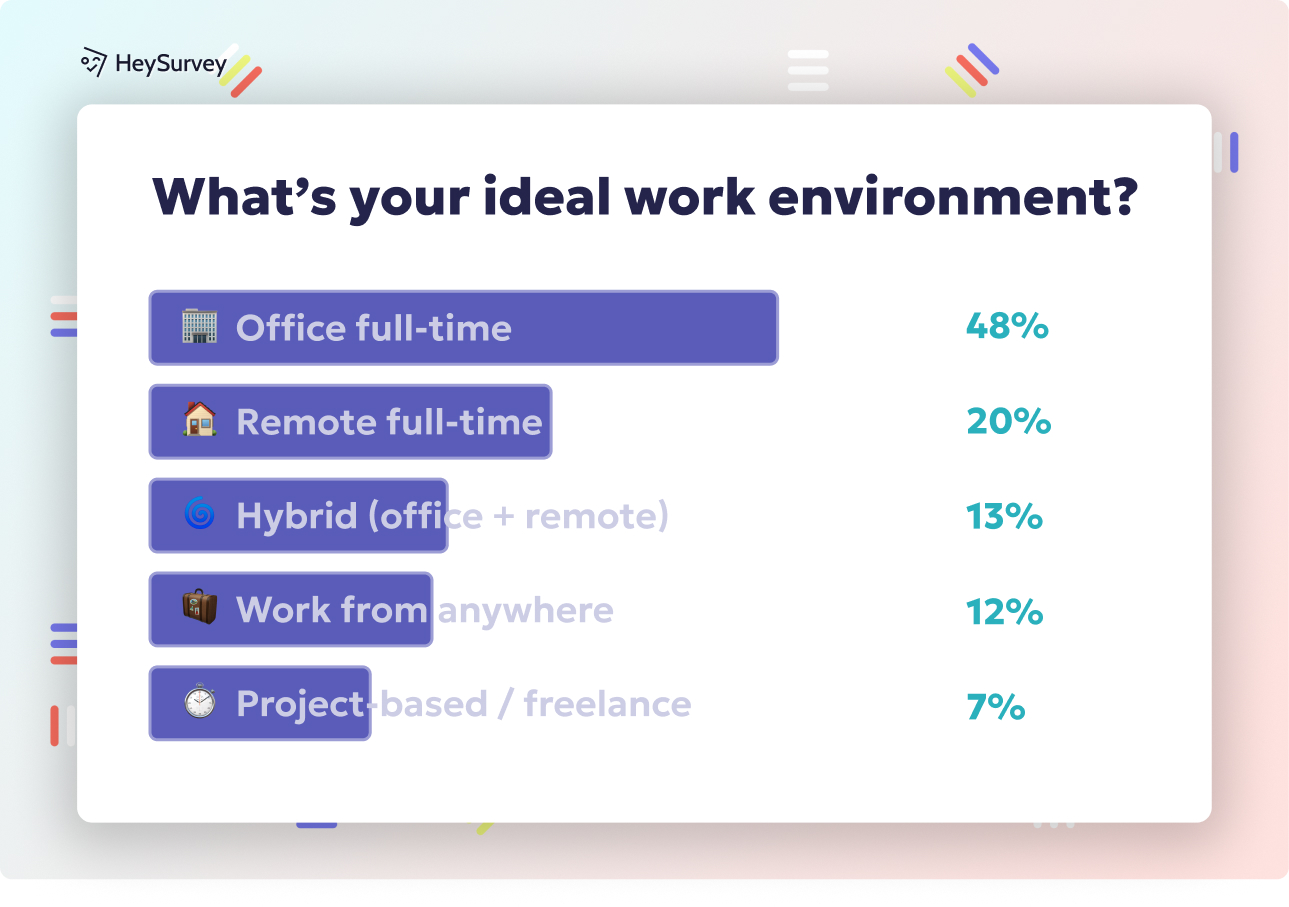29 Income Survey Questions: Types, Uses & Best Practices Guide
Explore 35 sample income survey questions across 7 types to capture accurate data for market research, finance, and policy analysis.
Understanding income is the secret sauce to smarter businesses, better policy decisions, and more effective programs. It’s a crucial data point for everything from setting product prices to assigning grant funds—but asking about money can get awkward fast. From privacy laws to cultural taboos, designing the perfect income question is no joke. In this playful-yet-practical guide, you’ll find seven powerful income survey types to match every data challenge, plus a best-practices toolkit to keep your process sharp and snappy.
Household Income Survey
Why & When to Use
Measuring household income is like gathering the ingredients list for a recipe—each addition changes the results. Businesses use it to understand combined buying power and forecast what products will actually sell in a household environment. Public agencies and planners rely on this insight for zoning, funding, and community supports, where group earning power is relevant rather than what one individual pulls in.
You’ll find these surveys especially handy at the customer persona development stage, where “Mr. Jones” isn’t just a guy, but a representation of how an entire family shop, save, and spend. These questions also shine in public-policy impact analysis, from housing affordability studies to neighborhood revitalization programs. The big win? Uncovering shared spending limits and financial decision-making trends that singles-only questions simply miss.
Targeted at financial services, household income helps assess loan risk, mortgage qualification, and insurance needs.
Community housing studies depend on accurate household income to match eligible tenants with affordable options.
Local government and NGOs allocate resources and plan interventions based on how much collective cash is realistically in play.
With these high-stakes uses, it’s essential to ask the right mix of direct and contextual questions, always ensuring clarity and tact.
5 Sample Questions
What is your total annual household income before taxes?
How many income earners contribute to your household finances?
Which of the following ranges best describes your household’s gross monthly income?
Has your household income changed in the past 12 months? (Increased/Decreased/Stayed the same)
What percentage of household income is allocated to housing costs?
Survey respondents often underreport income, with studies indicating that over half of welfare dollars and nearly half of food stamp dollars are missed in several major surveys. (journalistsresource.org)

Creating a survey with HeySurvey is a breeze, even if it’s your first time! Follow these 3 easy steps to get your income-focused survey up and running:
Step 1: Create a New Survey
- Head to the HeySurvey dashboard and click “Create Survey”.
- Choose “Empty Sheet” to start from scratch or pick a pre-built income survey template if you want a head start.
- Give your survey an internal name so you can find it easily later.
Step 2: Add Questions
- Click “Add Question” at the top or wherever you want to add.
- Select the question types that fit your income survey — like Choice for income brackets or Number for exact annual income.
- Enter your question text and set options like making questions required or adding helpful descriptions.
- For more advanced flows, try using branching so respondents only see questions relevant to their answers.
Step 3: Publish Survey
- When your questions are ready, click “Preview” to see how it looks on desktop and mobile.
- Happy with it? Hit “Publish” and grab the shareable link or get the embed code to place on your website.
- Remember, you need a HeySurvey account to publish and view results, so sign up if you haven’t yet.
Bonus Steps for Extra Shine and Smarts
- Apply Branding: Upload your logo and tweak colors and fonts in the Designer Sidebar to match your style.
- Define Settings: Set start/end dates, response limits, or a redirect URL after survey completion in the Settings Panel.
- Use Branching: Guide respondents through customized paths based on their income answers to keep it relevant and concise.
And voilà! Your income survey is good to go, looking sharp, and ready to collect insights with minimal fuss. Ready to launch? Start by opening a survey template below and get your data party started!
Individual Income Survey
Why & When to Use
When it’s all about you, that’s where the individual income survey steps into the spotlight. HR teams, recruiters, and career services love these questions for tracking alumni outcomes or benchmarking industry pay scales. When you want to know exactly what one person brings home, this is your tool.
Organizations scan for personal earning power to unlock patterns in workforce analytics and zero in on financial-aid eligibility for scholarships and grants. Unlike the broader household take, this survey slices down to what a sole breadwinner earns—essential for salary comparisons and personal lending risk profiles.
Use these questions for career surveys, annual employee reviews, and alumni engagement projects.
Perfect when analyzing pay equity, gender income gaps, or justifying a raise!
Product managers building salary-tracking platforms or job boards rely heavily on individual-based data for the best job-matching algorithms.
The strength here is precision—and let’s be honest, only you know what you pocket from that weekend gig selling artisanal dog biscuits.
5 Sample Questions
What is your current annual personal income before taxes?
What was your total income from wages, tips, and bonuses last year?
Do you receive any non-salary compensation? (Stock options, commissions, etc.)
How many hours per week do you typically work to earn this income?
Which of the following best describes your pay schedule? (Hourly, salary, contract, gig)
Survey respondents tend to underreport their wages by approximately 7.3%, with misreporting varying systematically based on individual, household, job, and firm characteristics. (arxiv.org)
Income Bracket (Categorical) Survey
Why & When to Use
Sometimes, you just want to know if someone falls into the “I can afford avocados” group or barely covering cereal. That’s the genius behind income bracket surveys. Rather than risking prickly questions about exact figures, respondents pick a range that matches their situation. Low-stress for them, still super useful for you.
This style is the go-to for huge consumer panels, sprawling political polls, or academic studies where you’d rather not chase people for exact numbers. It reduces friction—respondents feel less exposed picking a bucket instead of typing out an answer.
Widely used in market segmentation—grouping consumers by spending power with ease.
Political research leans on income brackets for accurate cross-demographic polling.
Academic surveys, especially in economics or sociology, use this model for processing thousands of responses without fuss.
With this approach, it’s the trends that matter, not pennies and dimes.
5 Sample Questions
Please select the range that includes your total household income: <$25K, $25–49K, $50–74K, $75–99K, $100–149K, $150K+.
Which of these brackets reflects your disposable monthly income?
What is your estimated annual pre-tax income from all sources?
Into which income tier does your primary residence’s area median fall?
Which bracket best represents your household’s net worth (including assets)?
Income Stability (Volatility) Survey
Why & When to Use
Even if you’ve got the cash, income volatility can turn budgeting into a rollercoaster. This survey digs into how reliable earnings are, surfacing the “feast or famine” cycles so relevant to gig economy workers, freelancers, and those in seasonal jobs. Financial institutions particularly need this to predict credit risk and payment default, not just how much a person makes, but when.
In the public sector, these insights fuel smarter social safety nets. Nonprofits and community organizations target their help where it’s needed most—people whose incomes swing without warning. For fintechs, knowing someone’s income predictability unlocks new credit models and smarter risk assessment.
Use for credit scoring, loan approvals, and new-financial-product rollouts.
Perfect for gig-work research, understanding the real story behind Uber and delivery paychecks.
Policy wonks count on it for developing programs to stabilize lives bounced around by unpredictable incomes.
It’s not just about the amount—it’s about the ride.
5 Sample Questions
In the past 12 months, how predictable has your income been? (Very stable to Very unstable)
How many months last year did your income fall below your basic living expenses?
Do you rely on seasonal or contract work for more than 30% of your annual income?
How confident are you that your income next month will match this month’s? (Scale 1–10)
Have you experienced an unexpected income loss greater than 20% in the last year?
Households experiencing persistent income volatility are approximately three times more likely to use payday loans than those with stable incomes. (socialpolicyinstitute.wustl.edu)
Income Source Diversification Survey
Why & When to Use
Let’s face it—most of us need more than one basket for our eggs. Income source diversification surveys dig up how people really make ends meet. From side hustles to rental income, this is pure gold for companies and nonprofits mapping gig economies or investment trends.
Financial-planning apps use this data to target savings advice. Taxation authorities get a much clearer sense of who’s earning what—and from where. That rich tapestry of earnings isn’t just a curiosity; it’s crucial for anyone wanting to design effective financial products or deploy impact investments.
Great for impact investors tracing if their funds reach truly diverse groups.
Essential for tax research—understanding multi-source earners for smarter policy.
Helps financial coaches spot where clients are spreading themselves too thin (or not enough).
It’s about the mix as much as the money.
5 Sample Questions
Which of the following sources contribute to your total income? (Check all that apply)
Approximately what percentage of your income comes from passive investments?
Do you receive government benefits such as unemployment or disability payments?
How many separate employers or clients paid you in the last six months?
What share of your total income is generated by self-employment or business ownership?
Income Growth & Projection Survey
Why & When to Use
The only thing more interesting than what you make now? What you think you’ll make next year. Projection surveys take the temperature of confidence, ambition, and reality. Workforce development teams, managers planning salary ladders, and retirement advisers all depend on this forward gaze to guide programs and predict markets.
Whether you’re mapping out promotions, prepping for a big move, or seeing who’s ready for a career leap, these are your questions. The data informs real purchasing power models—and gives companies a hint if their raises are keeping up with employee expectations (or not).
Essential for workforce planning—fine-tuning succession plans and future hiring needs.
Used in retirement and financial planning to project savings and investment strategies.
Powers corporate compensation reviews and internal mobility studies.
Knowing how people see their own future is a superpower for long-term strategy.
5 Sample Questions
By what percentage do you expect your income to increase over the next 12 months?
Have you negotiated a salary increase within the past year?
Do you anticipate changing jobs for higher pay in the next six months?
What is your desired annual income five years from now?
How confident are you in achieving your projected income growth? (Scale 1–10)
Disposable Income & Spending Capacity Survey
Why & When to Use
Not all income is created equal—some of it vanishes into rent, snacks, and gym memberships before you can even blink. The disposable income survey zeroes in on what’s really available to spend, save, or splurge. Retailers and marketers drool over this info—it turns bland salary stats into actionable buying signals.
Credit card companies and banks use this for smarter lending decisions, making sure you can afford those shoes and pay them back. For researchers, it crystalizes the gap between what people make and what they keep.
Indispensable for consumer finance—measuring true purchasing capacity and credit potential.
Retail chains base market-entry calculations on local disposable income data.
Advertising firms rely on it to prioritize spend-heavy demographics.
With disposable income, it’s all about the real-life spending power—not just the numbers on a paycheck.
5 Sample Questions
After taxes and essential bills, how much money do you have left each month?
What percentage of your disposable income is saved versus spent?
How often do unexpected expenses reduce your discretionary spending?
Which spending category claims the largest share of your disposable income?
Would an additional $100 per month change your purchasing decisions? (Yes/No; explain)
Best Practices: Dos & Don’ts for Crafting Income Survey Questions
Designing the perfect income question isn’t just a science—it’s an art. Applying best practices means you get honest answers, fewer dropouts, and meaningful results every time.
DO use clear ranges and mutually exclusive categories. No one wants to mentally juggle brackets—make them simple and easy to scan.
DO place sensitive income items later in the survey to build trust. Let respondents warm up before you go for the wallet questions.
DO provide context on confidentiality and data usage. A quick blurb about privacy goes a long way in getting real answers.
DON’T request exact figures when brackets suffice—minimizes drop-off. Income is personal, and most people prefer “close enough” over “exact.”
DON’T combine income queries with personally identifiable information in the same field. Keep data sections separate to shield privacy.
DO test wording across demographics for cultural relevance and comprehension. “Salary” may mean one thing in Paris, another in Peoria.
DON’T ignore mobile-first design—optimize scales for small screens. If it doesn’t click on a phone, it won’t click with today’s respondents.
Embrace these rules, and your surveys will spark more answers—and far fewer sighs and eye-rolls.
Conclusion & Next Steps
Choosing the right income survey type can transform good data into game-changing insights. By matching your approach to your audience and context, you’ll boost response rates and data quality. Don’t forget to A/B test and pilot small batches for the best results. If you want to go deeper, check out our additional resources or connect for expert survey design help. The richer your questions, the richer your stories become.
Related Financial Survey Surveys

32 Salary Survey Questions Examples – The Complete 2025 Guide
Discover 28 salary survey questions example across 8 survey types to collect accurate, actionable...

32 Financial Survey Questions: Types, Use-Cases & Templates
Explore 28 expert financial survey questions across 7 types to unlock spending habits, investment...

29 Income Range Survey Questions: Types, Uses & Examples
Explore 25+ income ranges survey questions with practical examples, types, and best practices to ...
